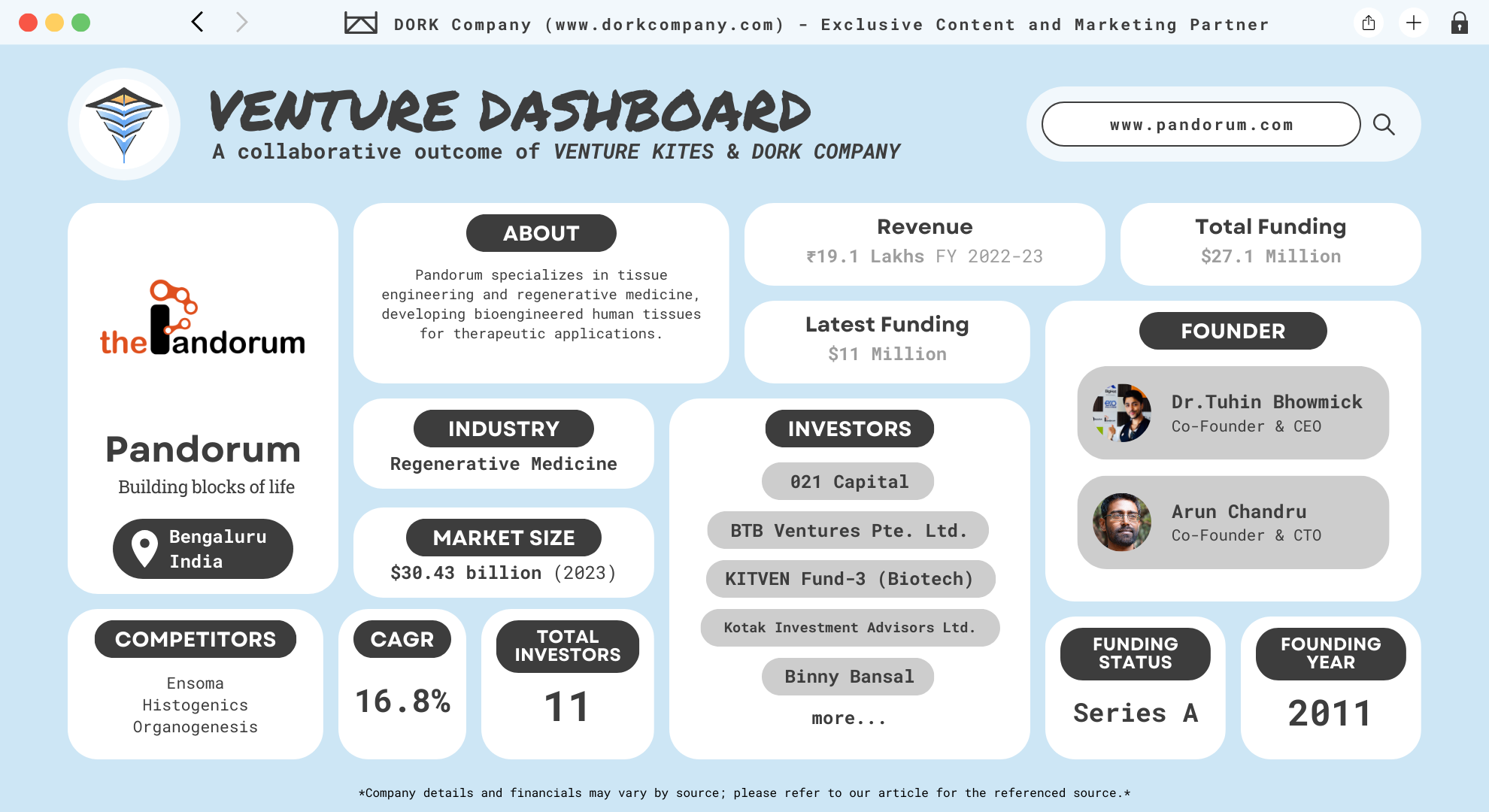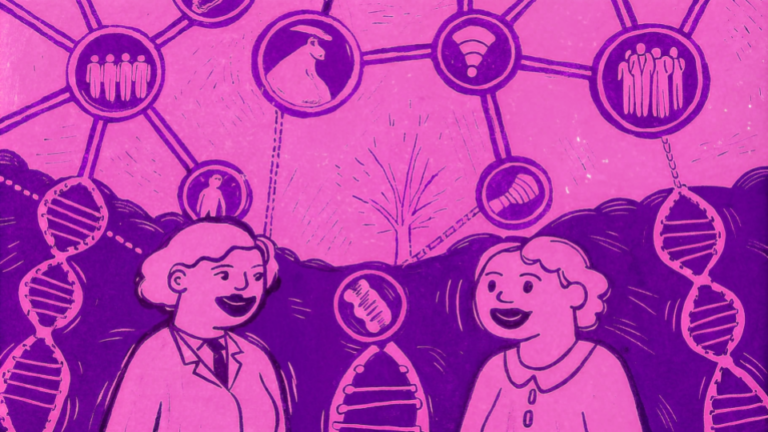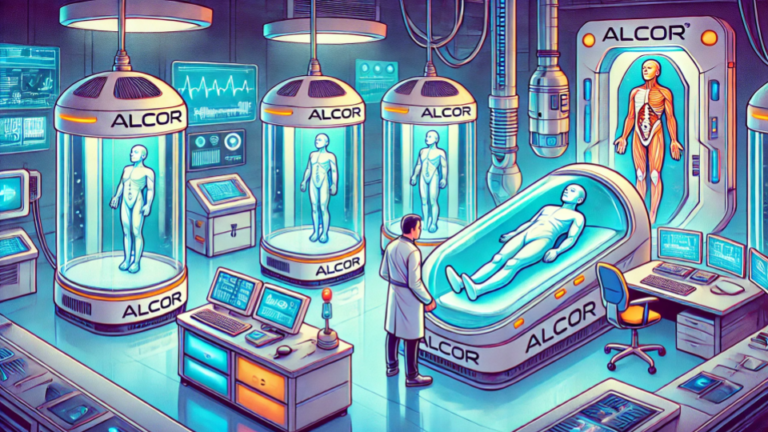The Pandorum Technologies Story : 4D Printing Human Organs

Printing organs might sound like science fiction, but at Pandorum Technologies, it’s just another day at the office. This Bangalore-based biotech startup designs and manufactures functional human tissues for research and therapeutic purposes. Their groundbreaking work in 3D bioprinting of liver and corneal tissues is revolutionizing how we think about healing. (Pandorum)
Pandorum uses advanced 4D bioprinting techniques and cellular engineering to build functional tissues. Their proprietary technology allows them to mimic the structure and environment of human tissues. One of their most notable achievements is creating a bioengineered cornea, a major step forward in treating vision loss caused by corneal injuries.
The company’s approach combines life sciences with cutting-edge technology to craft tissues like the cornea and liver, aiming to fill the critical shortage in organ transplants. By focusing on regenerative medicine, Pandorum Technologies strives to develop treatments that can heal the body from within, reducing the need for invasive surgeries and long-term medication.
The work of Pandorum Technologies is crucial in a world where the demand for organ transplants far exceeds supply. Their innovations offer a glimmer of hope to millions waiting on transplant lists and those who suffer from debilitating conditions that could be alleviated with better tissue solutions.
A Tissue Issue: From Research to Regeneration
In 2011, two young researchers, Dr. Tuhin Bhowmick and Arun Chandru, took a leap from academic labs to the world of biotech entrepreneurship. Bhowmick and Chandru’s goal was to tackle the shortage of donor organs by creating lab-grown tissues that could one day replace human organ transplants.
The two met during their time at the Indian Institute of Science (IISc), Bangalore, and their synergy was undeniable. They realized they could combine their expertise to build functional human tissues.
Dr. Tuhin Bhowmick, the CEO of Pandorum, has a background in biophysics and materials science. He holds a PhD from the Indian Institute of Science (IISc), Bangalore, where he specialized in organ-on-chip and bio-materials. (Dr. Tuhin Bhowmick)
Arun Chandru, the other co-founder and Managing Director, is an engineer-turned-biotechnologist. With a PhD in Aerospace Engineering from IISc, he brings a unique cross-disciplinary approach to the field of tissue engineering. His work earned him recognition in Forbes Asia’s “30 under 30” list in 2016, under the Healthcare and Science category.
Dr. Bhowmick’s early academic journey and work in cellular engineering laid the foundation for Pandorum’s groundbreaking products, like the bioengineered cornea and mini liver. They secured early support through the Biotechnology Industry Research Assistance Council (BIRAC) and other government bodies in India. Pandorum’s first breakthrough was in 3D printing human liver tissue, which opened doors for medical research and drug testing.
Heal Thy Market: The Billion-Dollar Race to Regenerate
The global regenerative medicine market is on fire, growing rapidly due to groundbreaking innovations in stem cell research, 3D bioprinting, gene therapy, and tissue engineering. In 2023, the market was valued at over $30.43 billion and is expected to grow at an impressive compound annual growth rate (CAGR) of 16.79% from 2024 to 2030 (Grand View Research).
This rapid growth is driven by increasing demand for personalized medicine, where treatments are customized based on a patient’s unique genetic profile. Regenerative medicine is not just a buzzword; it’s providing real solutions to chronic conditions like cardiovascular diseases, neurodegenerative disorders, and even cancer.
The field is exploding with new developments. Stem cell therapy dominates the market, accounting for a significant portion of clinical trials and ongoing research. Innovations like 3D bioprinting enable the creation of functional human tissues, offering a revolutionary way to approach organ shortages and repair damaged tissues (Allied Market Research).
North America is leading the charge, holding the largest market share in 2023, with over $15 billion in revenue. However, regions like Europe and Asia-Pacific are catching up fast, driven by government investments and increased clinical trials.
As more companies dive into regenerative therapies, the next decade promises massive advancements that could fundamentally change how we treat diseases and injuries. From cell-based therapies to tissue engineering, the future of medicine is regenerative.
The Core-neal Mission : Regenerating Hope, One Organ at a Time
Pandorum Technologies is pushing the boundaries of science, building human tissues that could one day save millions of lives. Founded in 2011, this biotech company is dedicated to tissue engineering and regenerative medicine. (About Pandorum)
Mission and Vision
Pandorum Technologies envisions a future where tissue shortages for transplants are a thing of the past. Their mission is to harness the power of biology and engineering to develop therapeutic products that solve real-world medical challenges. By combining bioengineering and cellular therapies, they aim to regenerate damaged tissues and organs, improving the quality of life for patients worldwide
Problems They Solve
The company tackles significant healthcare issues, such as the shortage of organs for transplant and the lack of effective treatments for degenerative diseases. Their bio-engineered tissues, including corneas and livers, are designed to reduce dependency on human donors and offer new solutions for regenerative medicine. Pandorum’s work addresses major health concerns like vision loss, liver disease, and organ damage.
Business Model
Pandorum Technologies operates primarily on a B2B model, partnering with research institutions, pharmaceutical companies, and hospitals. Their revenue streams include licensing their bio-engineered tissue technologies and forming strategic partnerships for clinical applications. With laboratories in Bangalore and the U.S., Pandorum collaborates with international institutions to drive their research and product development forward.
Pandorum’s Product Pipeline: Livers, Lungs, and Liquid Corneas, Oh My!
Pandorum’s innovative approach is reshaping the future of organ regeneration. This Bangalore-based biotech company has developed a diverse range of bioengineered tissues and regenerative therapies aimed at solving critical health challenges.
Bioengineered Cornea
One of Pandorum’s flagship products is the bioengineered cornea, designed to tackle corneal blindness, which affects over 28 million people globally. The company uses 3D bioprinting technology to create corneal lenticules, mimicking the natural structure of the cornea. These lenticules can be transplanted without the need for donor tissue. (Bioengineered Cornea)
Liquid Cornea
Their cutting-edge product Kuragenx, also known as Liquid Cornea, is another breakthrough. It’s a topical solution applied to the eye, regenerating scarless cornea tissue within a year. Unlike traditional corneal transplants, Kuragenx involves the use of biopolymers and regenerative nanotherapy to help patients regenerate their cornea without the need for donor tissue. In preclinical trials, Kuragenx has shown the ability to regenerate a healthy, functional cornea in under a year.
Mini Liver
Pandorum is also pioneering liver regeneration with their mini liver platform. This bioengineered tissue mimics liver functions, providing a powerful tool for drug testing and research. In the future, it could serve as an alternative to liver transplants, offering potential life-saving applications for patients with liver diseases. (Mini Liver)
Lung Regeneration
The lung regeneration project is one of Pandorum’s ambitious efforts to address lung damage caused by inflammation and fibrosis, particularly for COVID-19 survivors. This cell-free therapy uses exosome-based treatments to repair damaged lung tissue, offering a safe, non-invasive solution for lung diseases. (Lung Regeneration)
Exosome and Nanotherapy
Pandorum’s platform also includes regenerative nanotherapy, particularly through the use of exosomes—tiny vesicles that promote tissue healing. This technology is integrated into their products for accelerated regeneration of tissues such as corneas and livers.
How Pandorum Technologies Works: A Deep Dive into Bioprinting and Tissue Engineering
The company uses advanced bioprinting and cellular engineering to create functional human tissues that may revolutionize regenerative medicine. Their work revolves around several advanced scientific techniques that enable the regeneration and repair of damaged tissues without the need for donor organs. (Technology)
Biofabrication: Building Human Tissues Layer by Layer
At the heart of Pandorum’s innovation is 4D bioprinting. This process goes beyond traditional 3D printing by adding the fourth dimension—time. In 4D bioprinting, the structure of the printed tissue can change dynamically over time, mimicking natural tissue behavior. Pandorum uses bioprinters to replicate the complex microenvironment of human organs, such as corneas and livers. This technology ensures the tissue structure and functionality closely resemble their natural counterparts.
Exosome and Nanotherapy: Healing Without Cells
Pandorum also leverages exosome-based therapies. Exosomes are tiny vesicles that cells release, carrying proteins, RNA, and other molecules crucial for cell communication. Pandorum engineers exosomes derived from stem cells, optimizing them to carry therapeutic materials. These exosomes promote healing in specific tissues, such as the cornea, liver, and lungs. This cell-free therapy approach avoids the complexities of cell transplantation while still driving tissue regeneration.
Cellular Engineering: Growing Therapeutic Cells
Pandorum’s cellular engineering platform focuses on growing stem cells in 2D and 3D environments, scaling their production for therapeutic use. By fine-tuning the culture conditions, they produce high-quality mesenchymal stem cells (MSCs) that can be used in a variety of regenerative treatments. This scalable cell culture technology is key for their bioengineered tissues.
Beyond 3D: Bioengineered Materials
Pandorum also develops biomaterials that mimic the body’s natural extracellular matrix, providing a scaffold for cells to grow and regenerate. Their bio-inks and gels are engineered to be biocompatible, enabling the successful integration of these tissues into the body. These materials are used in both their bioengineered cornea and mini-liver projects.
Winning Hearts (and Livers): Pandorum’s Global Impact
Pandorum’s bioengineered tissues, particularly their advancements in corneal and liver regeneration, are paving the way for new medical treatments. Their work has the potential to alleviate organ shortages and reduce dependency on donor transplants. (Pandorum Technologies)
In 2019, it secured first place in the Entrepreneurship World Cup (India), earning a spot on the global stage in Riyadh. They were also named among the Top 50 Disruptive Startups of India in the same year. Earlier, in 2017, Pandorum won the Top Innovator Award at the ET Startup Awards, cementing its status as a leader in biotech.
Forbes Asia’s 30 Under 30 Co-founder Arun Chandru was named in Forbes Asia’s 30 Under 30 in 2016 for his contributions to healthcare and science, a recognition that showcases the company’s visionary leadership.
Teaming Up for Tissues : A Match Made in Silicon and Stem Cells
Pandorum’s long-term partnership with Wipro, a global leader in IT and consulting, is particularly transformative. Together, they aim to integrate Wipro Holmes’ AI capabilities with Pandorum’s expertise in tissue engineering. The primary goal is to shorten the time-to-market for regenerative therapies like bioengineered liquid cornea and expand across other projects, including lung and liver regenerative tissues. AI is used to analyze vast amounts of biological data, helping Pandorum optimize clinical outcomes and improve the effectiveness of its treatments (AIM).
Pandorum also works closely with several research institutions, both in India and the U.S. In particular, they have established relationships with the Medical University of South Carolina and Dr. Shroff’s Charity Eye Hospital in Delhi. These collaborations help Pandorum in the clinical translation of its regenerative medicine technologies, ensuring their therapies are rigorously tested and refined.
Partnering for Progress: Powering Regenerative Medicine with AI
Pandorum Technologies, a leader in regenerative medicine, has secured significant funding to fuel its innovative projects. Since its inception in 2011, the company has raised a total of $27.1 million through eight funding rounds. (Tracxn)
Recent Funding Rounds
- August 29, 2023: Pandorum secured $11 million in a Series A round. This funding round involved major institutional investors like Indian Angel Network, Acebright Pharma, Everest Finance, and several angel investors, including Ashish Kacholia and Sunil Kant Munjal.
- August 1, 2023: An additional $1.56 million was raised in another Series A tranche, with We Founder Circle stepping in as an institutional investor.
- October 18, 2021: Another $4.8 million in Series A funding was secured with the backing of Sunil Kant Munjal.
- June 3, 2021: A smaller tranche of $54,000 was raised in a Series A extension.
- September 8, 2020: Pandorum raised $5.6 million in a Series A round, supported by BTB Venture and KITVEN.
- December 30, 2017: $3.6 million was raised during another Series A round, involving investors like Indian Angel Network and BFL Investments
In FY 2022-23, the company reported a revenue of 19.1 lakh INR. This marked a significant decline from 64.4 lakh INR in FY 2021-22, which was one of their stronger fiscal years. The drop in revenue can be attributed to longer development cycles and delays in commercializing some of their key regenerative products, such as their bioengineered cornea, which is still in its pre-clinical stages. In FY 2020-21, Pandorum earned 37.1 lakh INR, showing consistent progress compared to earlier years. The company’s revenue in FY 2018-19 peaked at 112.3 lakh INR.
Big Dreams, Bigger Breakthroughs : The Future of Regenerative Medicine Is Here
Pandorum Technologies is redefining the boundaries of science with its innovations in tissue engineering. From creating bioengineered corneas to exploring the potential of mini-livers, this biotech company is revolutionizing healthcare. By focusing on regenerative medicine, Pandorum is addressing some of the most pressing medical challenges, such as organ shortages and degenerative diseases
Pandorum’s journey from a startup to a global leader in biotech underscores the immense potential of regenerative medicine. As they continue to push the limits of science and technology, their products could change the way we treat diseases, making regenerative therapies more accessible and effective (PitchBook).
The takeaway? You don’t have to wait to make an impact. If you have an idea, act on it. Pandorum’s success came from chasing a vision, collaborating with the right partners, and never giving up. Now, it’s your turn. What world-changing idea will you bring to life?Check out other inspiring stories on Venture Kites. Dive into more articles that explore how startups are shaping the future and turning impossible dreams into reality.
At a Glance with DORK Company

Dive In with Venture Kites
Lessons From Pandorum Technologies
Collaborate with Diverse Experts
The Lesson & Why it Matters: Collaboration across disciplines leads to more innovative solutions. It’s essential to combine scientific, engineering, and clinical expertise.
Implementation: Build partnerships with professionals from various fields to foster creative solutions and tackle complex problems.
How Pandorum Implements it: Pandorum collaborates with a multi-disciplinary team of scientists, surgeons, and engineers to bio-engineer tissues like the human cornea.
Leverage Government and Industry Support
The Lesson & Why it Matters: Governments and industry bodies offer invaluable resources and funding, especially in high-risk industries like biotech.
Implementation: Seek grants and support from government agencies and leverage industry partnerships to accelerate research.
How Pandorum Implements it: Pandorum has benefited from the Biotechnology Industry Research Assistance Council (BIRAC) and received grants to fuel its R&D efforts.
Adopt New Technology Early
The Lesson & Why it Matters: Being early adopters of technology, especially in cutting-edge fields, keeps a company competitive and at the forefront of innovation.
Implementation: Stay updated on technological advancements and be willing to invest in new tools that improve efficiency and output.
How Pandorum Implements it: Pandorum integrates technologies like 4D bioprinting and exosome therapy to stay ahead in regenerative medicine.
Seek Long-Term Partnerships
The Lesson & Why it Matters: Sustainable growth is built on long-term collaborations that bring in complementary skills and resources.
Implementation: Form strategic partnerships that align with your company’s mission and offer long-term benefits.
How Pandorum Implements it: Pandorum has long-term collaborations with institutes like the Medical University of South Carolina and others in the U.S. to advance its R&D.
Maintain Flexibility and Adaptability
The Lesson & Why it Matters: Industries like biotechnology are constantly evolving. Flexibility allows companies to adapt to new scientific discoveries and market demands.
Implementation: Be prepared to pivot or adjust strategies in response to changing conditions or opportunities.
How Pandorum Implements it: Pandorum has expanded its focus beyond corneal regeneration to include liver and lung tissues, responding to new medical demands.
Author Details
Creative Head – Mrs. Shemi K Kandoth
Content By Dork Company
Art By Dork Company
Instagram Feed
X (Twitter) Feed
Pandorum develops 3D-printed human organs and tissues, which can potentially replace or repair damaged human organs.
— Venture Kites (@VentureKites) October 21, 2024
To know more about this futuristic startup, check out @VentureKites https://t.co/Thhq6iyiXn
Proudly crafted with @dorkcompany_ – https://t.co/9nMJIiNnJH pic.twitter.com/c45dWJWXpm










